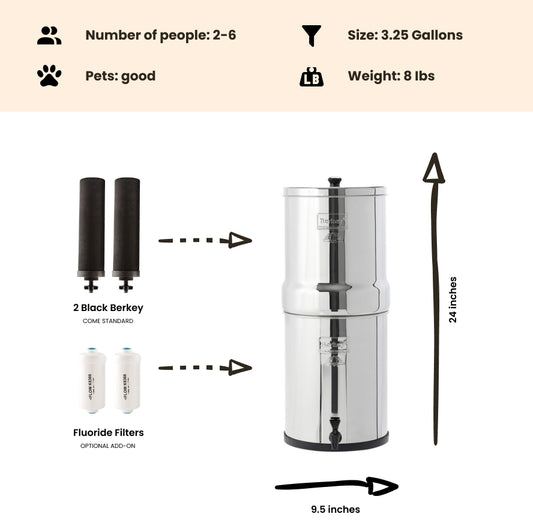
Climate Change and Urbanization Pose Threat to Groundwater Quality
By Dan DeBaunShare
Over half the global population is threatened by a decrease in the availability and quality of their drinking water due to impacts associated with climate change and increase urbanization, which is expected to result in an increase in organic carbon levels in groundwater sources, according to a new study conducted by scientists from the University of New South Wales.
The study, which was recently published in the scientific journal Nature Communications, analyzed an extensive global dataset consisting of 9404 results of dissolved organic carbon levels from groundwater samples collected from 32 countries in six continents.
Dissolved organic carbon occurs naturally in groundwater, however, when it is present in high concentrations, it is difficult and costly to reduce in order to render the water drinkable. In countries such as Australia, as well as many parts of the US, where groundwater is an important source of drinking water supplied to many towns and cities, increased concentrations of DOC in these important drinking water sources could be problematic.
According to Dr Liza McDonough, a researcher at the Connected Waters Initiative Research Center at the University of New South Wales and lead author of the study, the results predict an increase in dissolved organic carbon concentrations arising from projected changes in both rainfall and temperature associated with climate change, together with increased urbanization.
The authors identified dissolved organic carbon increases in groundwater of up to 45%, primarily resulting from temperature increases during the rainy season, such as in several south-eastern states in the US. They predict that increases in dissolved organic carbon in groundwater in these areas could push water costs up by US$134 per year for the average family of four.
Many countries around the world, including India, eastern China and several African countries are already experiencing significant groundwater contamination problems, which may be exacerbated by increases in dissolved organic carbon associated with predicted temperature increases forecast for the rainy season by 2050 for some regions, such as south-eastern China.
Generally, urbanization is expected to contribute to an increase in dissolved organic carbon in groundwater by as much as 19%, compared with agriculture or natural land use, primarily due to contamination from leaking septic tanks and sewer systems.
The study identified four key factors that were likely to contribute to rising groundwater DOC levels: climate change, land use practices, inorganic chemistry and age of the aquifer.
Health Risk
According to McDonough, an increase in dissolved organic carbon levels in groundwater, regardless of whether it's a result of contamination or naturally occurring DOC, poses a risk to human health, especially considering that groundwater is the largest source of freshwater on Earth, supplying more than half the global population with drinking water that is essential for survival.
However, since the majority of health impacts resulting from DOC in drinking water are related to by-products that form when the water is disinfected with chlorine during the treatment process and are influenced by other factors related to water chemistry, DOC in drinking water is not regulated by the World Health Organization or by many countries.
The problem is that while dissolved organic carbon does occur naturally in groundwater, it can combine with potentially harmful heavy metals that would normally bind to sediments and rocks, and transport these contaminants offsite and into drinking water supplies.
When one considers that more than 100,000 lifetime cancer cases in the US alone have been linked to exposure to carcinogenic contaminants in drinking water, this is concerning, said McDonough.
Increases Cost of Water Treatment
Since an increase in DOC levels in groundwater makes it more difficult to render this water drinkable and therefore increases the cost of treatment, it is important to understand what is responsible for causing DOC levels to rise.
"For example, we projected a 16 per cent increase in annual household water costs in some parts of the United States because of rising water treatment costs—due to the need to implement additional water treatment measures to remove increased DOC concentrations," said McDonough, adding: "The decrease in groundwater quality and substantial increase in water treatment costs will also compound existing constraints on groundwater resources, including availability."
Regional Differences
According to McDonough, while the climate- and urbanization-related impacts on groundwater DOC levels are likely to be seen worldwide, these impacts will differ regionally according to the climate and geography at each location.
"Our research found that in arid climates, groundwater DOC concentrations increased with higher rainfall because microbes can better break down organic matter, such as leaves, under warm and increasingly wet conditions," McDonough explained. "Increased temperatures in arid environments, however, reduced groundwater DOC concentrations because when conditions are too hot and dry, vegetation and organic matter sources are limited," she said. "By contrast, increased rain in warm and wet environments decreased groundwater DOC concentrations because heavy rainfall dilutes the DOC in groundwater."
According to McDonough, the next step is to conduct further research to find the most efficient water treatment solutions for regions where dissolved organic carbon levels in groundwater are expected to increase. This will entail investigating how the characteristics of dissolved organic carbon change according to the mineral composition found in different aquifers, since certain kinds of organic materials tend to cling to the surface of certain minerals, reducing the likelihood of this organic matter being present in the groundwater.
Journal Reference Liza K. McDonough et al. Changes in global groundwater organic carbon driven by climate change and urbanization. Nature Communications (2020). DOI: 10.1038/s41467-020-14946-1-
Regular price $234.00 USDRegular priceUnit price / per
-
Regular price $327.00 USDRegular priceUnit price / per
-
Regular price From $367.00 USDRegular priceUnit price / per
-
Regular price From $408.00 USDRegular priceUnit price / per
-

 Sold outRegular price From $451.00 USDRegular priceUnit price / per
Sold outRegular price From $451.00 USDRegular priceUnit price / per -
Regular price From $478.00 USDRegular priceUnit price / per
-
Regular price $332.50 USDRegular priceUnit price / per
$350.00 USDSale price $332.50 USDSale

Dan DeBaun is the owner and operator of Big Berkey Water Filters. Prior to Berkey, Dan was an asset manager for a major telecommunications company. He graduated from Rutgers with an undergraduate degree in industrial engineering, followed by an MBA in finance from Rutgers as well. Dan enjoys biohacking, exercising, meditation, beach life, and spending time with family and friends.
~ The Owner of Big Berkey Water Filters


















I have the travel Berkey and I absolutely cannot believe I waited so long to get one. Now filling it, one average, twice a day, I’d like to win the next size up which is the Big Berkey. Although I live in California I have an address out of state where I can receive my prize! I’d love to win! Thank you
Berkey